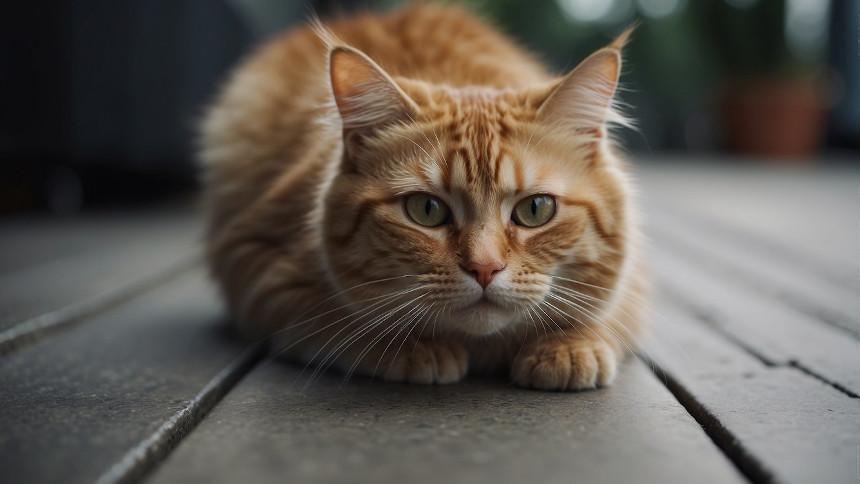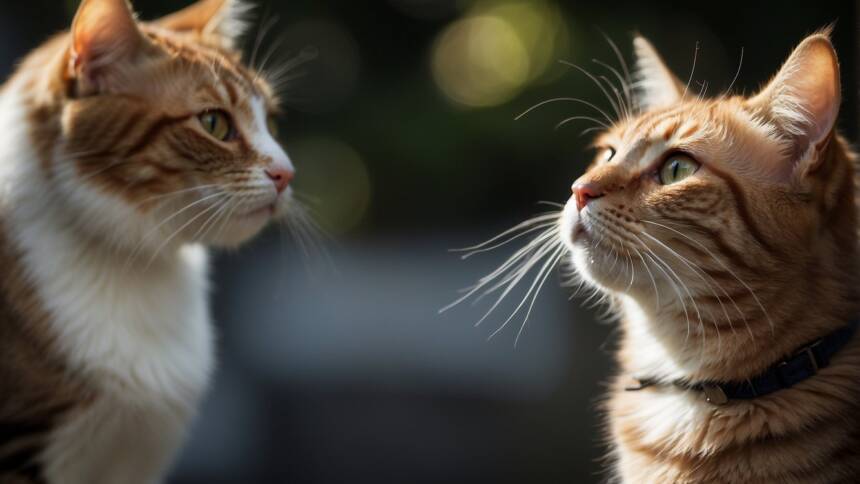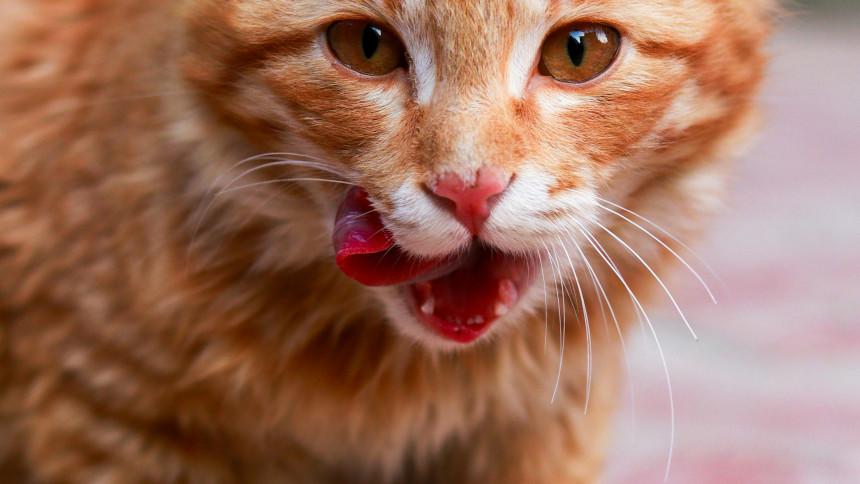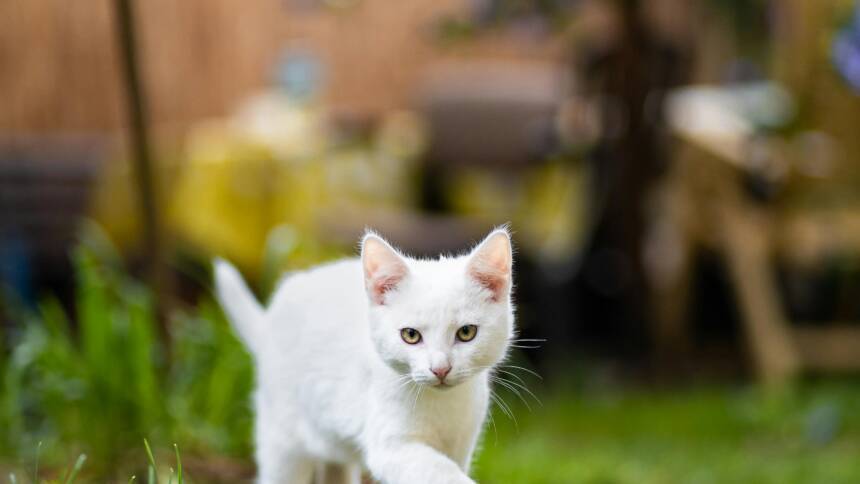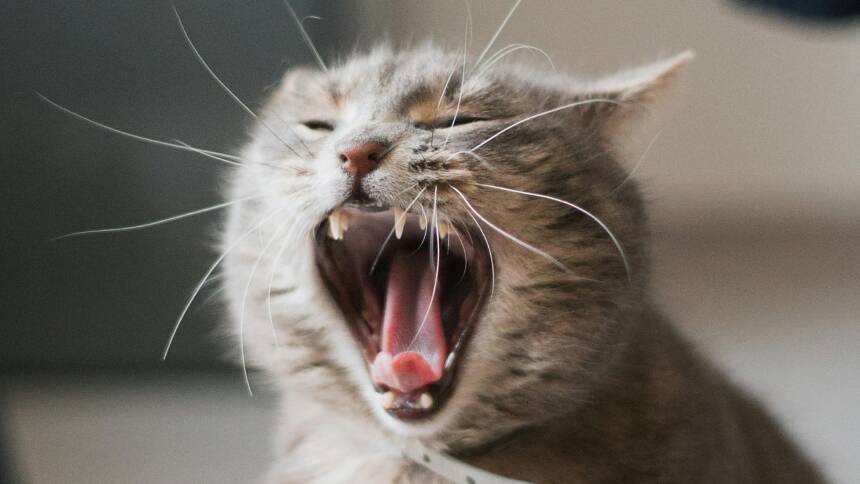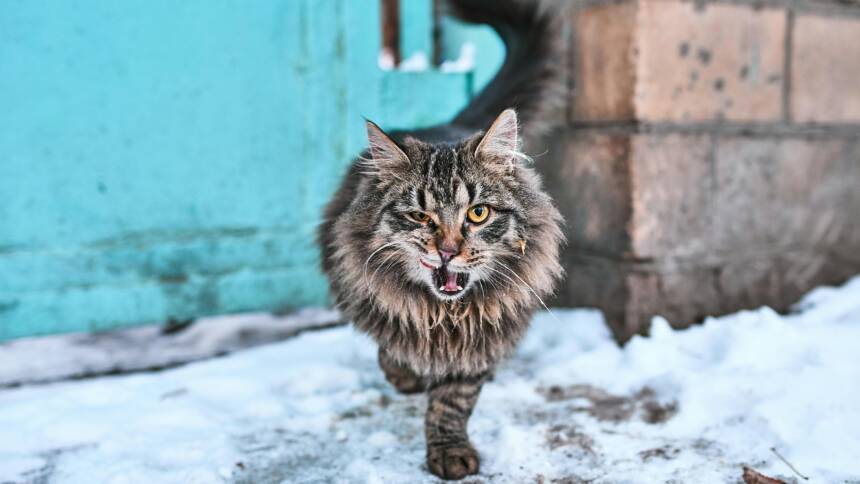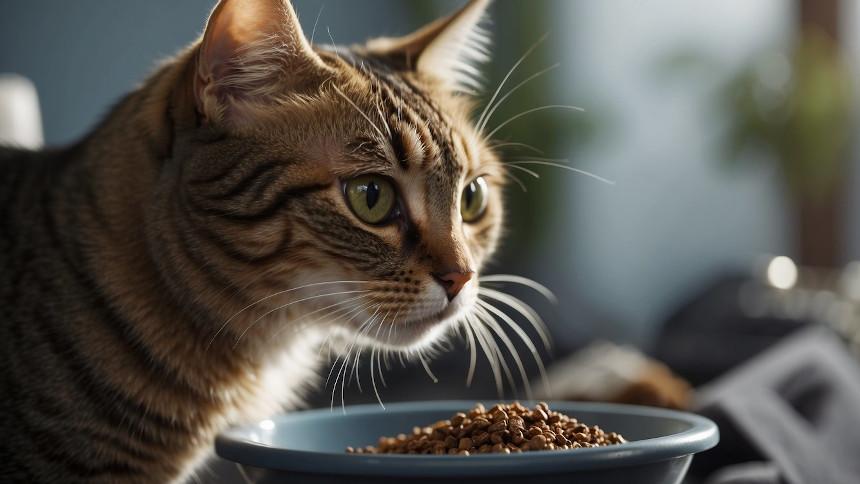When cats exhibit sudden changes in behavior, such as meowing loudly before defecating outside their litter box, it often signals an issue that needs addressing. A variety of factors can prompt this behavior, ranging from medical conditions to environmental stressors. It’s essential to observe the cat’s overall behavior and health, as these actions may be the cat’s way of communicating discomfort or distress.
Understanding why a cat poops on the floor after meowing loudly requires consideration of several potential causes. It could be due to an unclean or inaccessible litter box, which makes it undesirable for the cat to use. Medical issues, such as constipation or inflammatory bowel disease, may also result in this behavior. Additionally, cats may experience stress from changes in their environment or routine, which can lead to elimination outside the litter box.
To resolve these issues effectively, one must first identify the root cause by closely monitoring the cat’s actions and environment, and possibly consulting a veterinarian. Once the cause is determined, appropriate steps can be taken, such as modifying the litter box, addressing health concerns, or reducing stress triggers for the cat. This approach not only contributes to the wellbeing of the cat but also helps maintain a clean and harmonious home environment.
Understanding Cat Behavior
Cats communicate discomfort or displeasure through various behaviors, including vocalization and changes in bathroom habits. Addressing the root causes of these behaviors requires an understanding of the cat’s health and environment.
Identifying Stress and Anxiety
Stress and anxiety in cats can manifest in numerous ways, including vocalization followed by inappropriate elimination, such as defecating outside the litter box. Causes of stress may include environmental changes like moving to a new home, introduction of new pets or family members, or alterations in the daily routine. A stressed cat might meow loudly as an expression of discomfort before eliminating on the floor as a misguided attempt at marking territory or seeking attention.
Medical Issues and Health Problems
Medical issues should not be overlooked as they can cause changes in a cat’s behavior. Health problems that may lead to a cat meowing and defecating outside the litter box include:
- Constipation: Difficulty passing stools may lead to discomfort and vocalizations.
- Diarrhea: A sense of urgency may prevent the cat from reaching the litter box in time.
- Inflammatory Bowel Disease: Chronic condition that can cause pain and irregular bowel habits.
- Colitis: Inflammation of the colon that can cause pain and defecation outside the litter box.
Owners are encouraged to consult a veterinarian to rule out or treat any underlying medical issues.
Diet and Digestive Health
Diet plays a pivotal role in a cat’s digestive health. Sudden changes to a cat’s diet or intolerance to certain food ingredients can lead to gastrointestinal upset, resulting in symptoms like constipation or diarrhea. Ensuring a well-balanced diet appropriate for the cat’s age, health status, and lifestyle is essential in maintaining proper digestive function and can prevent stress and anxiety related to digestive discomfort.
Litter Box Fundamentals
When addressing litter box concerns, it is crucial to focus on maintenance, strategic placement, and the choice of litter to ensure a cat-friendly environment and prevent undesirable behaviors.
Proper Litter Box Maintenance
Regular cleaning of a litter box is of utmost importance. They should scoop out waste at least once a day and change out the entire box weekly to maintain a clean litter box. Additionally, for homes with multiple cats, providing several boxes — generally one more box than the number of cats — helps prevent litter box issues. Remember that cats are fastidious creatures and a dirty box may lead them to avoid it entirely.
- Daily:
- Scoop waste.
- Check for any signs of abnormal waste that may indicate health issues.
- Weekly:
- Replace litter completely.
- Wash the box with mild detergent and warm water.
A self-cleaning litter box can be a convenient option, but owners should ensure it operates correctly and does not intimidate the cat.
Litter Box Placement and Accessibility
The litter box location greatly influences a cat’s willingness to use it. The box should be placed in a quiet, accessible area, away from busy household traffic and noise. Cats value their privacy and prefer not to eat and eliminate in the same area, so keeping the box separate from feeding areas is essential.
- Ideal Locations:
- Quiet corners.
- Low-traffic rooms.
- Avoid:
- Placing near loud appliances.
- Areas that trap a cat, offering no escape route.
The Impact of Litter Type
The type of litter can deter or attract a cat to its box. Many cats have preferences for certain textures and scents. Unscented, clumping cat litter is typically preferred as it is easier to keep clean and more closely mimics the natural substrate for burying waste.
- Common Preferences:
- Unscented.
- Fine-textured, clumping kitty litter.
Owners may need to experiment with different types to discover their cat’s preference, ensuring it is one that also allows for easy maintenance to benefit both the cat and the owner.
Environmental Considerations
When a cat exhibits the behavior of meowing loudly followed by pooping on the floor, environmental stressors are often at play. These stressors can disrupt a cat’s routine and sense of security, leading to such distress signals.
Household Changes and Cat Stress
Any significant change in a cat’s environment can trigger stress. The introduction of new family members, rearrangement of furniture, or even subtle changes like a different air freshener can unsettle a cat. Moving to a new home is particularly disruptive; it involves not only a change in the environment but also a loss of the cat’s established territory. During such transitions, a cat may express its discomfort and anxiety by pooping outside its litter box as a form of communication or as a misdirected attempt to reestablish its presence.
Multi-Cat Households
In homes with multiple cats, the dynamics of space and territory become complex. Cats are inherently territorial animals, and the presence of other cats can lead to competition for resources such as food, sleeping areas, and litter boxes. When a cat feels its territory is threatened or encroached upon, it might resort to marking—which can sometimes include eliminating outside of the litter box—to signal its claim to particular areas of the house. To mitigate such behavior, it’s essential to provide multiple litter boxes (the general rule is one per cat, plus one extra) and ensure each cat has its own space to retreat to.
Behavioral Training Techniques
When addressing the issue of a cat meowing loudly followed by pooping on the floor, behavioral training techniques can be highly effective. These methods are centered around reinforcing good behaviors and understanding the underlying causes that may relate to territory marking.
Positive Reinforcement
Positive reinforcement is a cornerstone of behavioral training. It involves rewarding a cat for using the litter box properly, which can strengthen the desired behavior. Rewards can be in the form of treats, praise, or playtime, all of which can provide mental stimulation and reinforce good habits. It’s important that the rewards are given immediately after the cat uses the litter box so that the cat associates the litter box with positive outcomes.
| Do’s | Don’ts |
|---|---|
| Give treats promptly | Delay rewards |
| Offer affection | Punish after accidents |
| Encourage playtime | Ignore good behavior |
Addressing Territory Marking
Territory marking is a natural behavior in cats, and it can lead to them pooping outside of their litter box. To discourage this, owners should ensure their cat has a sense of security and adequate space. Introducing new pets or moving to a new home may trigger territory marking. It’s essential to provide multiple litter boxes in different locations, as this can make a cat feel less territorial. Cleaning soiled areas thoroughly to remove scents is also imperative to prevent re-marking. Additionally, engaging in regular playtime helps alleviate stress and divert attention away from marking behaviors.
Health and Wellness Monitoring
When a cat meows then poops on the floor, it may be indicative of underlying health conditions that require attentive monitoring and care. This behavior should prompt owners to consider health and wellness checks to rule out or address potential issues effectively.
Routine Check-Ups with the Veterinarian
Regular visits to the veterinarian are crucial to maintaining a cat’s health. Owners should ensure their pets undergo annual examinations to detect any medical conditions early. During these check-ups, veterinarians can assess for signs of arthritis, mobility issues, or cognitive dysfunction, which could contribute to litter box aversion.
Signs of Pain and Discomfort
Cats may exhibit meowing as a vocal expression of pain or discomfort during defecation. It is important for owners to observe their cat for any signs such as prolonged squatting, vocalizing, or avoidance of the litter box, which could suggest health problems like a urinary tract infection or constipation. Any change in litter box habits warrants a veterinarian consultation to determine if there’s a medical condition needing treatment.
Problem-Solving Strategies
In addressing the issue of a cat that meows and then poops on the floor, it is crucial to identify the underlying cause and implement both immediate and long-term solutions. The strategies below span from veterinary involvement to cleaning practices.
When to Involve a Veterinarian
If a cat is meowing excessively before eliminating outside the litter box, it could indicate a health issue such as a urinary tract condition or other medical concerns like arthritis. The following symptoms necessitate a consultation with a veterinarian:
- Frequent meowing or vocalization before or during elimination
- Signs of discomfort or pain, such as straining to poop
- Vomiting, changes in appetite, or lethargy
- Any sudden changes in litter box habits
- Blood in the stool or urine
Cleaning and Prevention
After ruling out health issues, the focus shifts to cleaning and prevention.
Cleaning:
- Remove solids: Pick up any feces from the floor promptly.
- Clean thoroughly: Use an enzymatic cleaner to eliminate odor and prevent the cat from reoffending in the same location.
Prevention:
- Ensure the litter box is clean; some cats refuse dirty litter boxes.
- Provide multiple litter boxes in different, quiet, and easily accessible areas of the home.
- Place a litter box near the site where the cat poops on the floor to encourage proper use.
- Use positive reinforcement when your cat uses the litter box properly.
Implementing these strategies can help resolve the behavior of a cat meowing and then pooping on the floor, creating a more harmonious living situation for both the cat and its owner.
Product Recommendations
When addressing the issue of a cat that meows and then poops on the floor, considering the right products is crucial for managing this behavior. Two key areas to focus on are the types of litter products and environmental enrichment to provide comfort and reduce stress for the cat.
Selecting the Right Litter Products
Litter Box Per Cat: Each cat should have access to its own litter box. For households with multiple cats, the general rule is to have one litter box per cat, plus one extra. This ensures that each cat has a clean space to do their business without feeling threatened or crowded.
- Traditional Litter Boxes: Ensure they are large enough for the cat to turn around and dig comfortably.
- Self-cleaning Litter Boxes: These can be beneficial for busy pet owners as they keep the litter box clean automatically, which may encourage the cat to use their box instead of the floor.
Environmental Enrichment
Pheromone Products: Pheromone diffusers, sprays, and collars can help calm a stressed cat. These products mimic natural cat pheromones and can provide a sense of security, potentially reducing the incidence of a cat pooping outside the litter tray.
- Diffusers: Place them in the area where the cat spends most of their time.
- Sprays: Apply them to bedding or furniture to create a calming environment.
- Collars: These can be worn by the cat to provide constant stress relief.
